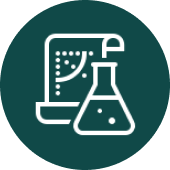GlucoMedix Nutramedix drops
Enthält keine nennenswerten Mengen an Kohlenhydraten, Fetten oder Eiweißen
%NRV (Nutrient referent value) nicht vorhanden
Nettofüllmenge: 60ml und 120ml
Nutramedix LC
Jupiter, Florida 33458 USA
561-745-2917
info@nutramedix.com
Traditionally used plant extracts

The full effect can only be achieved by taking it correctly

You have further questions?
We try to answer all your questions with the best of our conscience. If you have any further questions, you can contact us at any time.
All drop preparations can be mixed together in the same glass of water. The mixture can be stored in the refrigerator for several days before consumption.
Each 30 ml bottle of our liquid products contains around 600 drops, correspondingly each 60 ml bottle contains around 1200 drops and each 120 ml bottle contains around 2400 drops. This way you can easily calculate how many days a product will last.
When we say that our products have high bioavailability, we mean that all of our products are designed to be easily absorbed by the body at a cellular level. That's why we offer many of our products in liquid form.
The recommended dose of NutraMedix products is intended for an average-sized adult weighing 60 - 85 kg. For children, a guideline value of 1/4 of the specified dose per 15 kg of body weight may apply.
The sources listed serve to provide information regarding the ingredients of this product. They do not claim to be complete or exclusive.
This product and its description do not replace a visit to the doctor and do not represent a promise of healing, but rather serve to provide information. The statements made are based on traditional traditions and experience and have not been proven by scientific studies. If you have serious or unclear symptoms, please seek medical advice.











